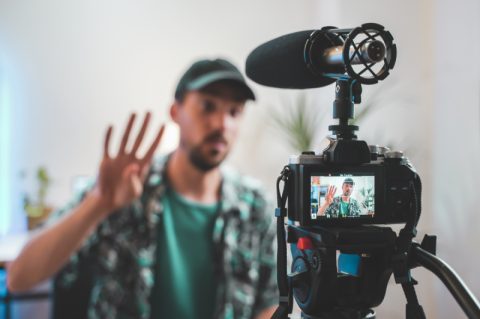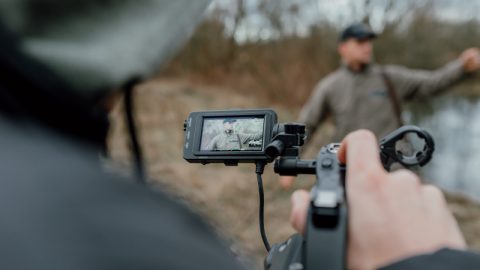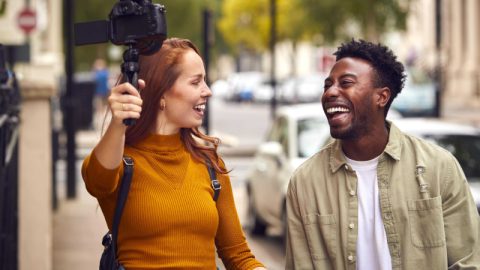Industry Secrets for High-Impact Video Storytelling

At Ideal Insight, we have always believed that the most effective videos do more than show a product or service. They tell a story that makes people feel something, remember it, and act on it. In a world where audiences are endlessly scrolling and skipping, the challenge is no longer about simply producing video content. The challenge is creating content that stops people in their tracks. High-impact storytelling is the answer, but the way you achieve it is often different to what most marketers assume.
The truth is, people are not looking for another advert, they are looking for something that resonates with their own experiences. A well-told story has the ability to cut through the noise, spark emotion, and build a genuine connection. When that connection happens, the message does not just reach the audience, it stays with them.
Open with Curiosity, Not Clarity
Most video campaigns open with information: a logo, a tagline, or an explanation of what the viewer is about to see. While this seems logical, it is not how you win attention. Audiences today need intrigue more than clarity at the start. Curiosity is what pulls them in.
Think of a powerful opening line in a novel or a striking headline in a newspaper. It makes you stop, wonder, and want to know more. The same principle applies to video. Instead of beginning with “We are a leading technology company,” you might open with a thought-provoking line such as “What if the future of your business could fit into your pocket?” This creates a sense of mystery and primes the viewer to stay engaged until they find the answer.
The lesson here is that clarity can wait. In those first few seconds, what you need most is intrigue.
Layer in Micro-Stories
A single story can be effective, but videos that resonate on a deeper level often include a series of micro-stories woven together. These are short, relatable snapshots that connect with viewers on multiple levels. It might be the story of a customer, a behind-the-scenes glimpse of your team, and a product demonstration all tied into one cohesive narrative.
Take Apple’s campaigns as an example. The adverts rarely focus on a phone as an object. Instead, they show the device enabling many small but meaningful moments: a student finishing a project, a parent capturing their child’s first steps, or an artist sketching their vision. Each of these is a micro-story, and together they form a narrative tapestry that makes the product feel indispensable.
By layering your video with these smaller human moments, you create a sense of depth and relatability that a single storyline cannot always achieve. You can see this in Apple’s recent campaign “A Gift for Mom”, which features real family moments (first steps, first solid meal, big sibling interactions, etc.) captured in spatial video and tied together in an emotionally rich film.
Use Contrast as a Storytelling Tool
One of the most powerful yet overlooked techniques in video storytelling is contrast. Great stories do not move in straight lines. They have highs and lows, quiet and loud moments, and stark differences that make each beat of the story feel more dramatic.
For example, a technology brand could show the chaos of outdated processes followed by the simplicity of their solution, highlighting the transformation. A charity might show the silence of a struggling community interrupted by the sound of laughter when support arrives. Contrast works visually, emotionally, and even in pacing, ensuring that audiences remain engaged from beginning to end.
The sharper the difference you present, the more memorable the story becomes.
Borrow from Cinema, Not Just Marketing
The most impactful videos feel more like short films than traditional adverts. This is because these kinds of videos borrow techniques from cinema: suspense, foreshadowing, symbolism, and pacing. These techniques make a video feel immersive rather than transactional.
Consider a luxury brand that delays showing its product until the final frames, building anticipation like a film’s climax. Or think of a sports brand adopting the structure of an underdog story, complete with setbacks, resilience, and triumph. These cinematic devices capture audiences because they mirror the way we have consumed stories for centuries.
By treating your video less like a brochure and more like a piece of cinema, you elevate it from information-sharing to emotional storytelling.
Play with Perspective
Most videos are shot using predictable, safe angles. High-impact storytelling often comes from breaking that pattern and offering fresh perspectives. A travel brand might show a city not from the viewpoint of a tourist but through the eyes of a street musician. A food company could film an advert entirely from the perspective of a child, their small hands and curious gaze offering a completely different sense of wonder.
When you shift perspective, you create freshness. The story becomes more than something to watch; it becomes an experience for the viewer. It shows them the world in a way they are not used to seeing, which makes the message stick more effectively.
Sound Design Is Half the Story
It’s easy to think of video as purely a visual medium, but sound carries just as much, if not more emotional weight. A subtle heartbeat beneath a tense scene, the rising swell of music as a product is revealed, or even a sudden silence at a critical moment can completely change the way a video feels and how the audience experiences it.
Nike advert, such as Awaken Your Madness, is a perfect example of sound’s impact. The rhythm of footsteps, the beat of music, and the roar of the crowd add energy and intensity to the visuals. Director Sam Pilling captured the raw power and focus of elite athletes like Kylian Mbappé and Erling Haaland, using sound to highlight every movement and emotion. These campaigns show that effective storytelling doesn’t just happen on screen, it also happens in your audience’s ears, where every sound shapes the experience.
Leave Room for Audience Imagination
Sometimes, the most powerful videos are not the ones that show everything, but the ones that leave space for interpretation. When viewers are allowed to connect the dots themselves, the story becomes more personal and impactful.
A sustainability campaign, for example, might avoid a barrage of statistics. Instead, it could show one lonely plastic bottle floating down a river, followed by a shot of a child picking it up. The meaning is clear without being over-explained. The audience fills in the rest of the story, and in doing so, it becomes theirs.
By leaving room for imagination, you turn your viewers from passive watchers into active participants.
The Wrap-Up: Storytelling Beyond the Obvious
The true secrets of high-impact video storytelling are not always the obvious ones. While many focus on keeping things short or adding a strong call-to-action, the deeper creation lies in intrigue, contrast, perspective, sound, and space for imagination. These are the techniques that industry leaders use to make their videos memorable. The brands that stand out are not necessarily those with the largest budgets or the glossiest visuals. They are the ones that understand storytelling at its core: the ability to make people feel, think, and remember.
Because when all is said and done, a video is not just a piece of content. It is a story that has the power to live on in the minds of its audience long after the screen goes dark.
Partner with Ideal Insight and watch your ideas transform into unforgettable visuals!
Related Articles
Want to see more?
Read up on the latest insights and information from the team at Ideal Insight.


